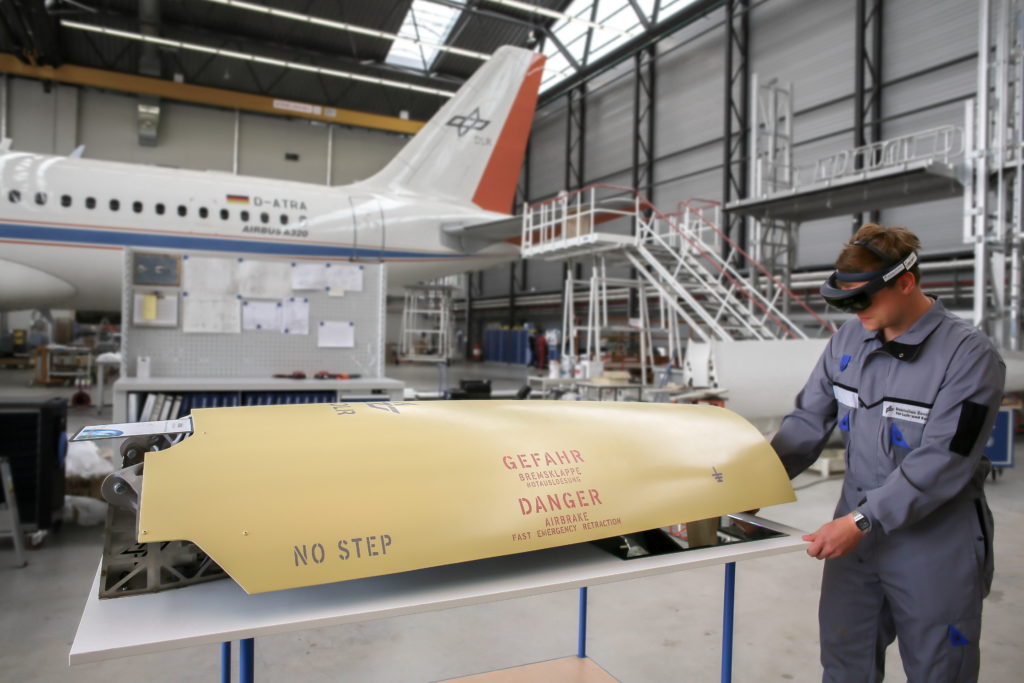To take off or not to take off? – Future aircraft maintenance
Taking off or not taking off – that is often the question when minor damage to an aircraft is discovered. An object may have hit the aircraft exterior or a delivery vehicle may have come too close to the cargo hatch. Composite materials in particular, of which many aircraft are made these days, can be damaged without the damage being visible from the outside. Experts then have to travel to the sometimes remote airfields to carry out an on-site assessment and determine how to proceed. This takes time and effort and the aircraft are unable to fulfil their task. In addition, the number of available experts is limited, which can also prolong the downtime of the aircraft.
In many cases, data from an aircraft’s digital twin and the use of augmented reality (AR) glasses as an interface could provide a solution. This would significantly speed up the assessment of the airworthiness of a damaged aircraft.
This is the focus of the ‘Airbrake’ application study presented here. Using an aircraft component, an active structural health monitoring system for the automatic detection of a damage situation and an integrated calculation of residual strength was embedded in the app of AR glasses. The glasses thus serve as an interface between real and virtual twins during an inspection task. The data recorded during the damage analysis, such as photos or ultrasound scans, are immediately stored in the digital twin in a data cloud. This gives experts at any point in the networked world the opportunity to participate in and support the assessment. If they also use AR glasses, they can virtually ‘get a picture’ of the situation on site themselves and make a decision with the technicians on the aircraft.
Link:
German Aerospace Center (DLR)
Institute of Lightweight Systems
E-Mail contact-dlr@DLR.de

